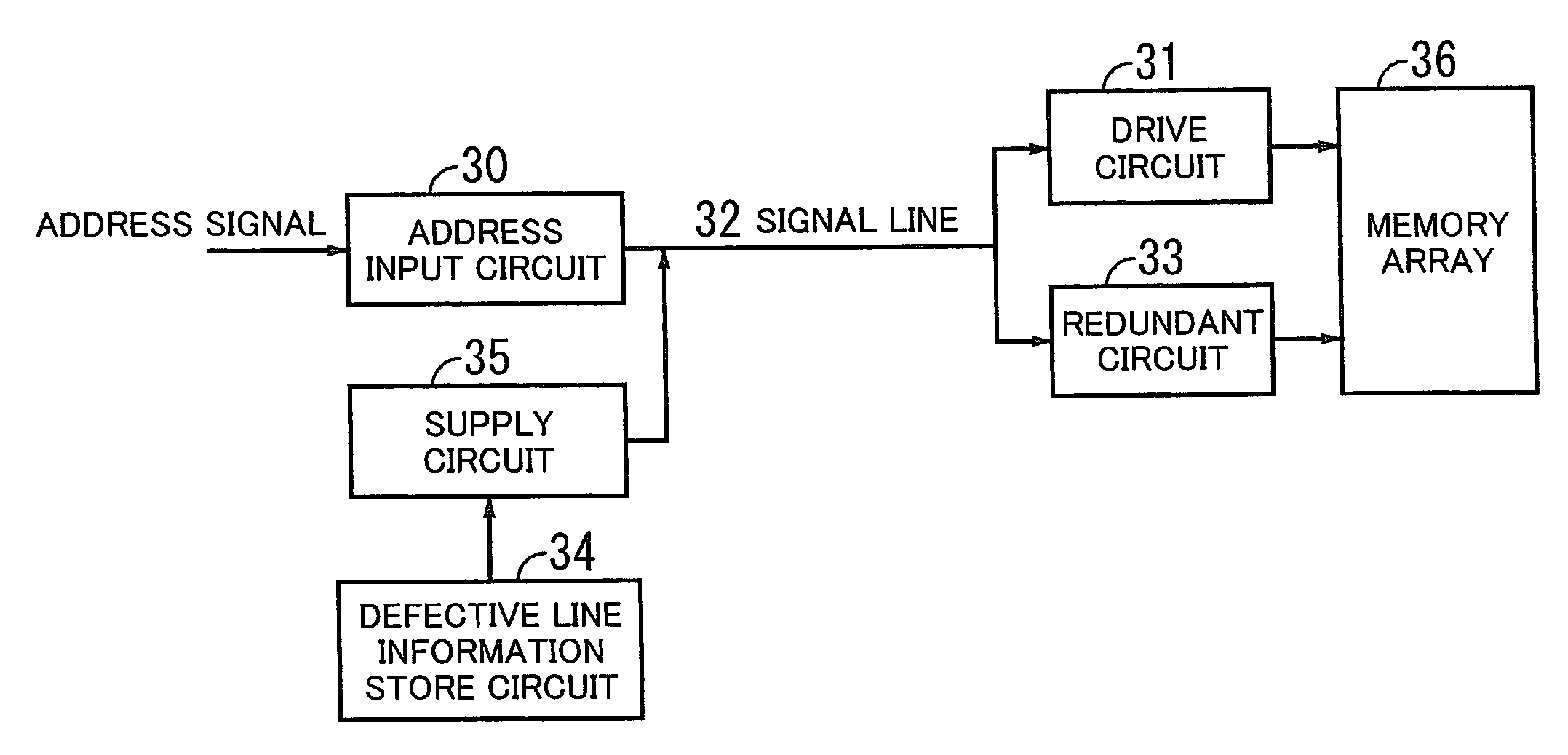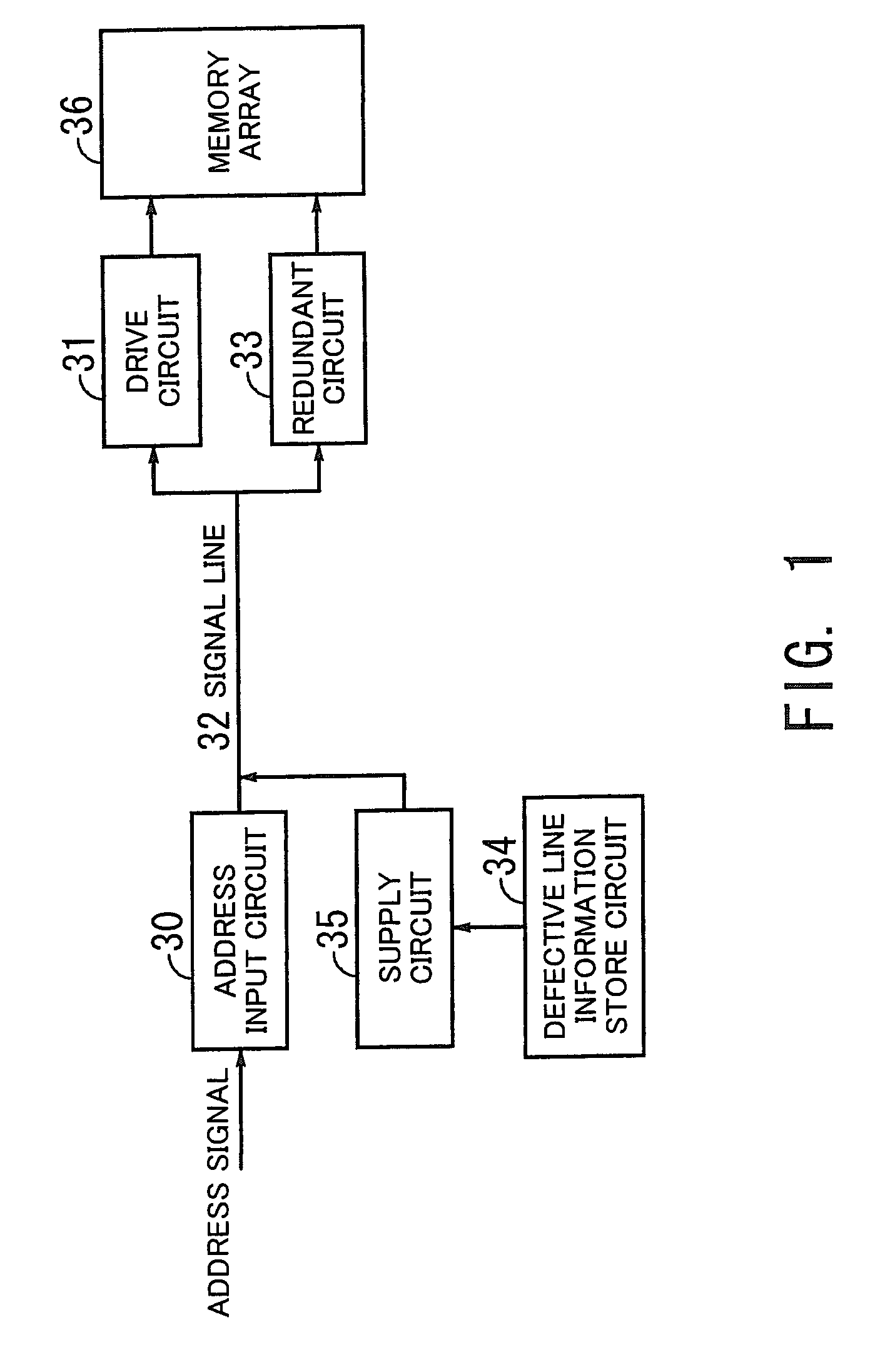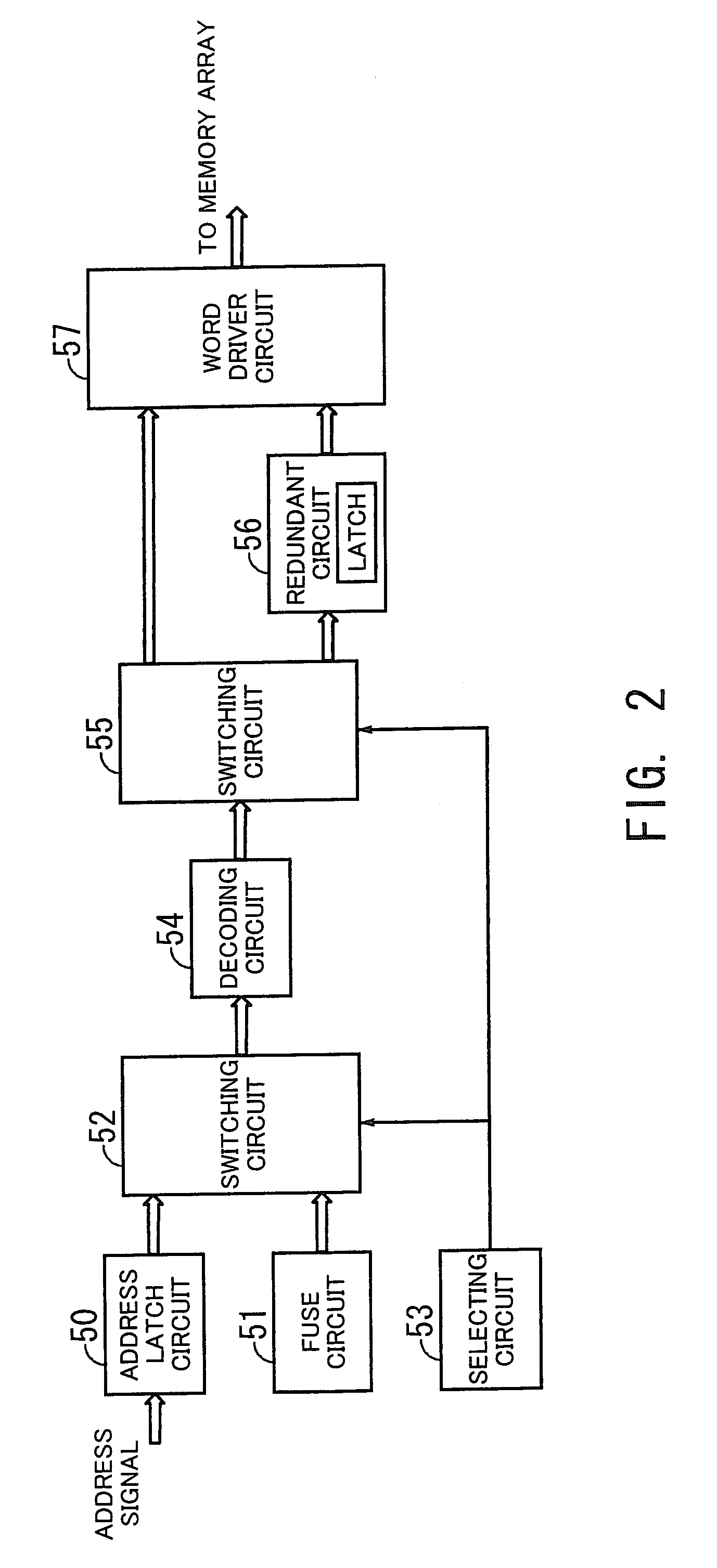Semiconductor memory device
a memory device and semiconductor technology, applied in the field of semiconductor memory devices, can solve the problems of difficult decoder layout, weak probability of wiring penalties, and inapplicability of techniques, so as to reduce the probability of wiring penalties and facilitate the arrangement of decoders
- Summary
- Abstract
- Description
- Claims
- Application Information
AI Technical Summary
Benefits of technology
Problems solved by technology
Method used
Image
Examples
second embodiment
[0085]the present invention will now be described.
[0086]FIG. 5 is a view for giving an overview of a second embodiment of the present invention. As shown in FIG. 5, a semiconductor memory device according to the second embodiment comprises memory arrays 60a and 61a, decoding circuits 60b and 61b, fuse circuits 60c and 61c, and wirings 60d and 61d.
[0087]The first through fifth columns from the left of the memory array 60a, decoding circuit 60b, fuse circuit 60c, and wiring 60d form a subblock and the sixth through tenth columns from the left of them form another one.
[0088]Moreover, the first through fifth columns from the left of the memory array 61a, decoding circuit 61b, fuse circuit 61c, and wiring 61d form a subblock and the sixth through tenth columns from the left of them form another one.
[0089]In this example, only four subblocks are shown to simplify descriptions, but in practice more than four subblocks can exist.
[0090]The memory arrays 60a and 61a include a plurality of me...
third embodiment
[0102]the present invention will now be described.
[0103]FIG. 7 is a view showing the structure of a third embodiment of the present invention. The third embodiment is a synthesis of the first and second embodiments. In this example, a semiconductor memory device according to the third embodiment comprises a subblock 65 and subblock 66. As shown in FIG. 5, two or more subblocks may exist in the horizontal direction.
[0104]FIG. 8 is an enlarged view of an area enclosed with a dashed line in FIG. 7. In this example, the area includes an address latch circuit 70, a fuse circuit 71, a selecting circuit 72, a switching circuit 73, decoding circuits 74a and 75a, switching circuits 74b and 75b, latch circuits 74c and 75c, redundant circuits 74d and 75d, word driver circuits 74e and 75e, and memory cells 74f and 75f.
[0105]The address latch circuit 70, fuse circuit 71, selecting circuit 72, switching circuit 73, decoding circuits 74a and 75a, switching circuits 74b and 75b, redundant circuits...
PUM
 Login to view more
Login to view more Abstract
Description
Claims
Application Information
 Login to view more
Login to view more - R&D Engineer
- R&D Manager
- IP Professional
- Industry Leading Data Capabilities
- Powerful AI technology
- Patent DNA Extraction
Browse by: Latest US Patents, China's latest patents, Technical Efficacy Thesaurus, Application Domain, Technology Topic.
© 2024 PatSnap. All rights reserved.Legal|Privacy policy|Modern Slavery Act Transparency Statement|Sitemap



